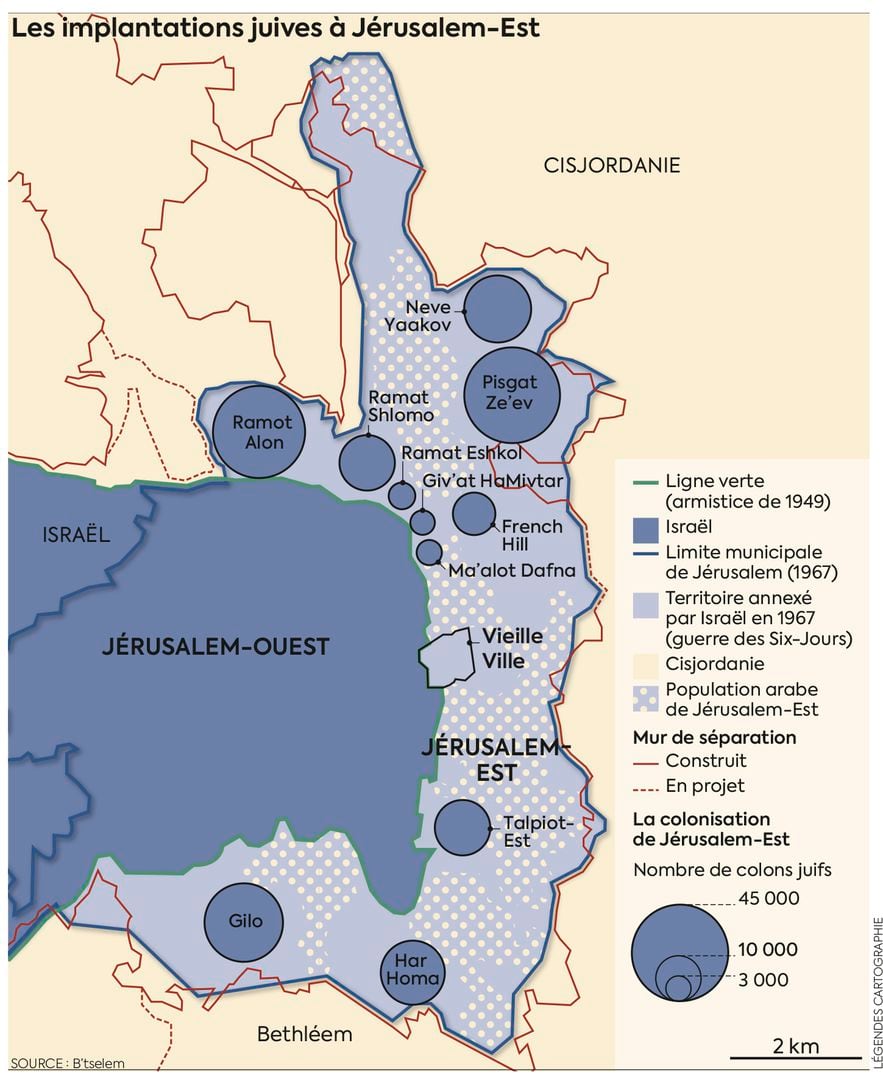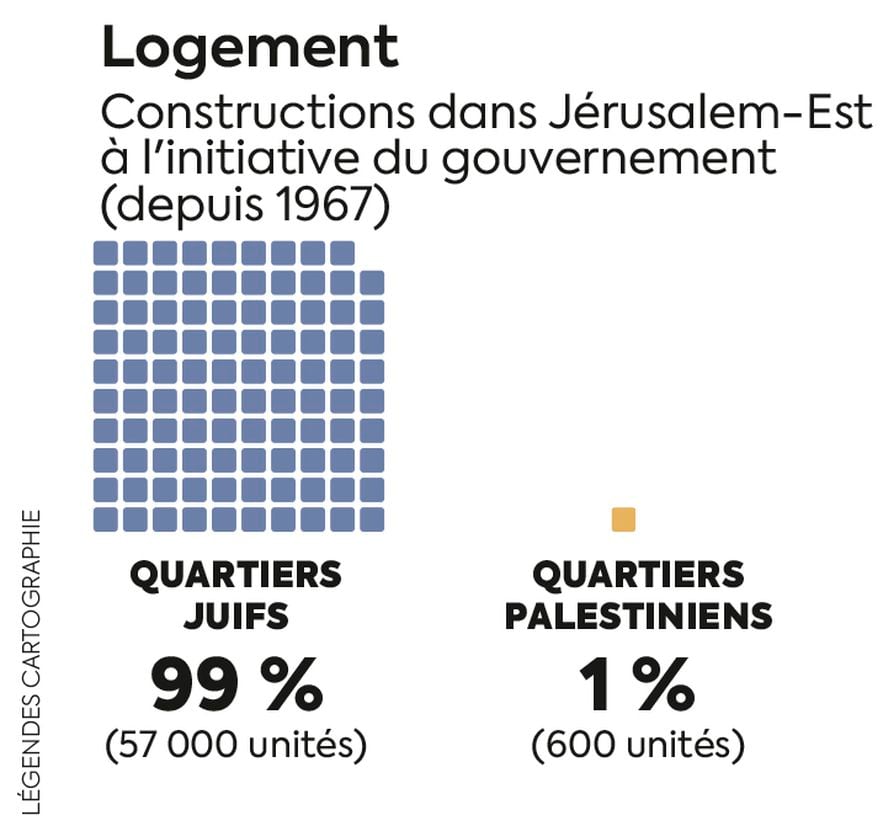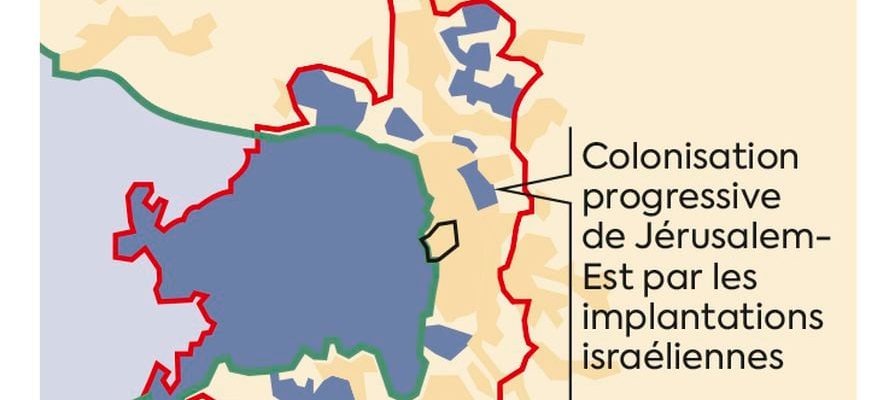Geographer, diplomat and essayist, Michel Foucher is a specialist in borders, to which he has devoted several works, notably The obsession with borders (Perrin, 2007) and, more recently, Ukraine-Russia: the mental map of the duel (Gallimard, 2022). As a student, he devoted his thesis to the Green Line, which separated West Jerusalem and East Jerusalem from 1949 to 1967. Advisor in charge of political-strategic affairs in the cabinet of Hubert Védrine from 1998 to 2002, this former director of the Center for he analysis, forecast and strategy department of the Quai d’Orsay, has visited the Middle East many times for consultations with the protagonists of the Israeli-Palestinian conflict.
“The Old City of Jerusalem is 1 square kilometer multiplied by three thousand years of history. Without going back that far, let’s remember that between the 16th and 20th centuries, it was a city of the Ottoman Empire. In December 1917, as part of World War I, Jerusalem was conquered by the British with their Australian and New Zealand allies. In 1923, the League of Nations gave the United Kingdom the mandate to govern the territory which had previously been Ottoman : it is ‘Mandatory Palestine’, whose status continued until the creation of the State of Israel by the United Nations on April 14, 1948.
Following the Arab-Israeli War that same year, Jerusalem was divided into two sectors: the western part was administered by Israel and the eastern area by Transjordan (renamed Jordan in 1949). During the existence of Mandatory Palestine, the Muslim population doubled from (approximately) 555,000 to 1.2 million people; that of the Jewish community increased tenfold, jumping from 60,000 to 630,000 inhabitants.
© / Cartography legends
Since the beginning of Zionism – a political and religious movement that appeared in Eastern Europe in the 1880s, which advocates the return of Jews to Palestine – the formation of the State of Israel is the story of a group of a thousand small settlements that are established in strategic locations. It is a land strategy that is similar to a game of go: the Israelis occupy points, then connect them together to form blocks. They are thus inspired by the effective method used by the Germans in the 18th century when they settled in Central Europe; in Silesia or Transylvania. In this approach, due to its historical and religious importance, Jerusalem represents an absolute priority, much more than the West Bank.
This is not colonization in the classic sense of the term, whatever the self-proclaimed “settlers” of the far right who use this improper term say. Israel is not an empire that seeks to integrate colonized populations into its system. It is a struggle for the same land, between unequal and separate forces. This is why, when we talk about Jerusalem or the West Bank, the term “settlement”, translated from Hebrew, is more accurate than that of “colony”.

© / Cartography legends
Whatever the case, in 1967, at the end of the Six-Day War, Israel reunified Jerusalem by annexing East Jerusalem, where the Old City is located, which includes the Al-Aqsa mosque, still administered today. by the king of Jordan. The third holiest site in Islam, it was built at the top of what Jews call the Temple Mount, the holiest site in Judaism. With this annexation, which includes 28 cities and towns on the outskirts of East Jerusalem, including Bethlehem, the “metropolis” of Jerusalem increases from 6 to 72 square kilometers. New Israeli settlements immediately appear in the gaps, alongside the spaces residence of the Palestinians, on the fallow “public domain”. In 2000 another concept appeared, enshrined in the Israeli Constitution: the “greater Jerusalem”, which covers 125 square kilometers. This territory is home to a growing number of development cities, comparable to our new cities. An urban project capable of housing 45,000 new (Israeli) inhabitants is, for example, underway in Atarot, between Jerusalem and Ramallah (West Bank). This policy of nibbling is reflected in the demography: the population of East Jerusalem today has 233,000 Israelis and 361,000 Palestinians. The successive settlements around Jerusalem contribute to the fragmentation of the Palestinian territory which, according to the United Nations, is made up of 165 pieces: the result is that a possible Palestinian state does not would have more of a viable territorial base, the return to the 1967 borders therefore being a serious illusion.
This policy is not the prerogative of Benjamin Netanyahu’s government. On the contrary, it is an old state policy, carried out by successive governments of the right and left since 1967, which mobilizes several ministries – starting with that of Construction and Housing – in close coordination with the municipality of Jerusalem. Also, those who are incorrectly called “settlers” are driven by different motivations, and settled in distinct places. Some ultra-Orthodox clerics occupy biblical sites in the Jordan Valley, in the northeast of Israel, while others choose the West Bank, which they call Judea Samaria, where the Jewish presence has been documented since Antiquity.

3781 jerusalem housing
© / Cartography legends
The latter are supported by ultraorthodox and nationalist hawks, often poor (40% of them live below the Israeli poverty line), delinquents, unemployed (according to their interpretation of the Talmud, men are not supposed to work) and supremacists advocating “the hunt for the Palestinians”. Conversely, Israelis who take up residence in East Jerusalem and the neighborhoods east of Tel Aviv are generally secular, motivated by low real estate prices. While the square meter reaches 12,000 euros in Tel Aviv, it drops to 4,500 east of the Green Line (the 1967 border), where Israelis are in immediate contact with Palestinians, including around Jerusalem- East. Added to this is another phenomenon: the purchase of old buildings in the Old City by rich Americans. Between Jerusalem, a place of political and religious power, and Tel Aviv, a secular hi-tech city on the shores of the Mediterranean Sea, the contrast was greater and greater, until the jihadist pogrom of October 7.”
.
